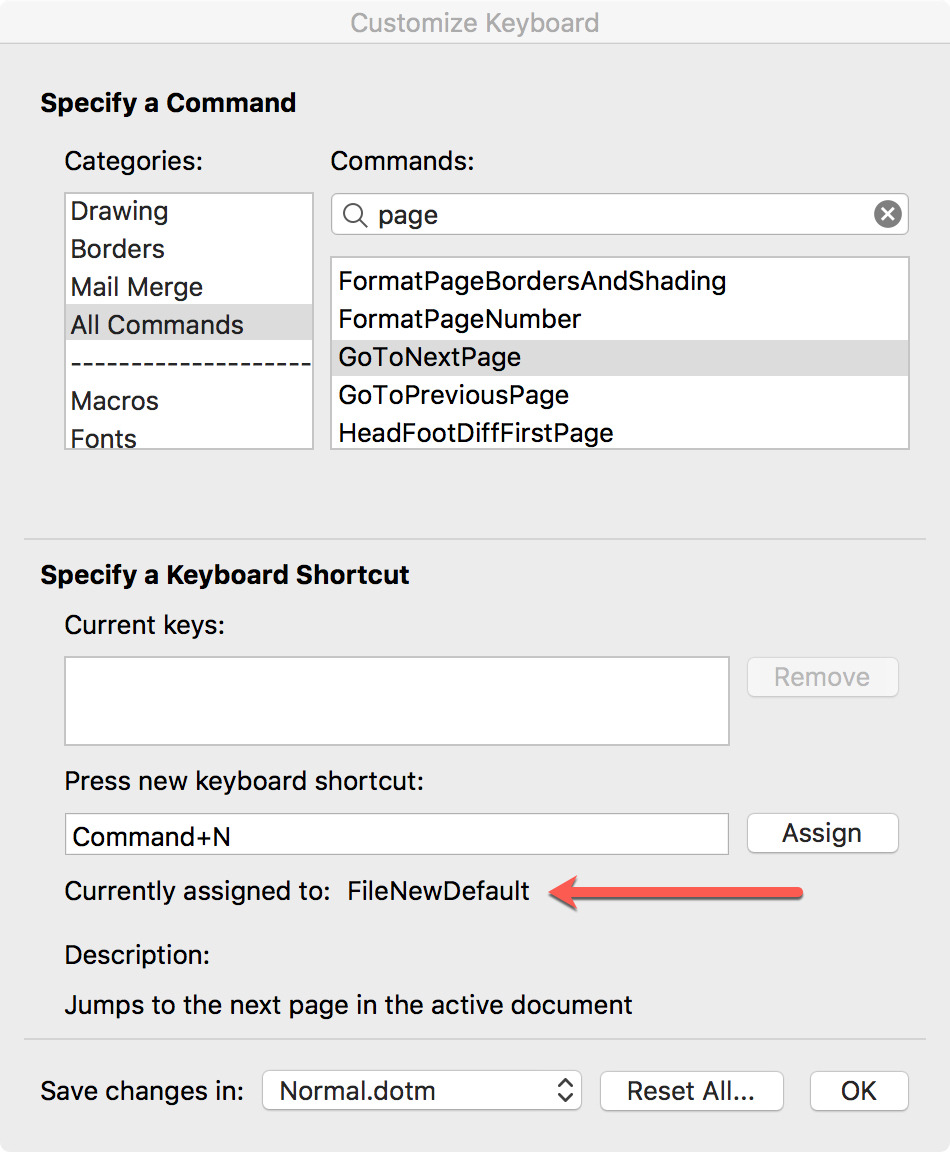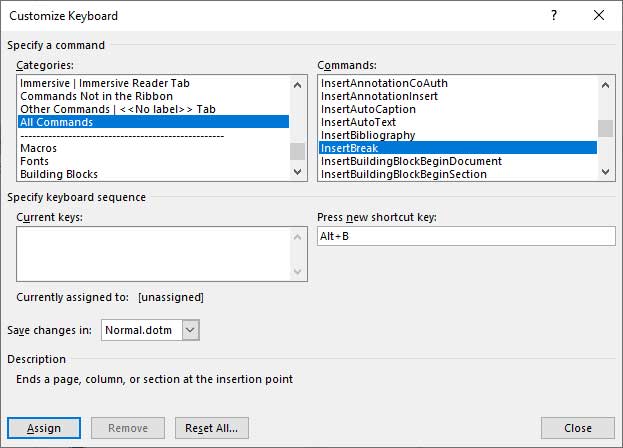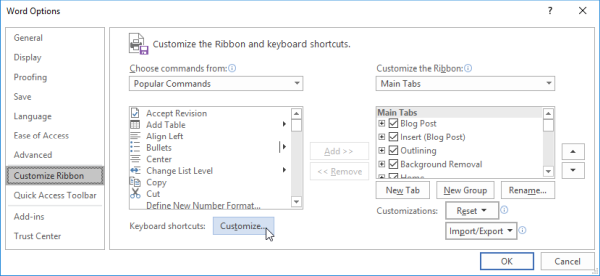
- #MICROSOFT WORD KEYBOARD SHORTCUTS CUSTOMIZE HOW TO#
- #MICROSOFT WORD KEYBOARD SHORTCUTS CUSTOMIZE FULL#
- #MICROSOFT WORD KEYBOARD SHORTCUTS CUSTOMIZE SOFTWARE#
I often think about different versions of Word like Dropbox vs Box: similar but different.
#MICROSOFT WORD KEYBOARD SHORTCUTS CUSTOMIZE SOFTWARE#
These shortcuts will work on most of your computers for most of your use-cases most of the time.Ī friendly note that it is possible that your keyboard layout, operating system (Windows or Mac), and version of the software (desktop, client, version, and so on) you are running will impact some shortcuts and the utility of this advice. Writing an article about general Word shortcuts reminds me of a quote attributed to the poet John Lydgate and later adapted by President Lincoln: “You can please some of the people all of the time, you can please all of the people some of the time, but you can't please all of the people all of the time”. Of course which shortcuts to learn and when to use each depends on the type of computer you are using - and your goals. If you are working from home and want to expedite the speed and accuracy of your engagement with Word, you can take time to learn about keyboard shortcuts that follow.
#MICROSOFT WORD KEYBOARD SHORTCUTS CUSTOMIZE FULL#
When you play a piano you can push keys or you can have a more full body experience and deeply interact with the instrument. Unlike webinar software which is largely web based and requires simple click and point interactions, Word can be fully immersive.īelieve it or not, Word is more akin to augmented reality in that regard. I consider myself something of a keyboard shortcut guru and want to pass some of these lessons on to you. Specifically you can use keyboard shortcuts to greatly accelerate your typing and word processing speeds.

Regardless of your past associations with Word, there are ways you can start using this popular tool better today. In college I remember sending myself Word files and saving each with a laughably hard to understand name (like Final Draft 1.21a). Clearly companies love and experience the benefits Word affords because this tool keeps staff thinking, communicating, and writing. Maybe you use it daily at work to conduct research, draft important documents, or write essays.
#MICROSOFT WORD KEYBOARD SHORTCUTS CUSTOMIZE HOW TO#
Perhaps Word was the first word processor you learned how to type on. In this article we will dive deeper into one of these products, Microsoft Word. The core apps and services included in Office 365 include: That is a lot of users leveraging a subscription service to access Microsoft Office products. You’re now ready to use this keyboard shortcut for skipping to the next Track Change in your document.According to Microsoft's first quarter results, Office 365 has 200 million monthly active users.

Click Assign (4), then click Close (5).Just make sure that it’s not currently assigned to another action by checking the Currently assigned to information below the Current keys box). (In the example above, I pressed Alt and c - you can press whatever key combination you think you will remember easily. Put your cursor in the Press new shortcut key field, then press the key combination you want to use for this action (3).On the Customize Keyboard window, select the Review Tab from the Categories list (1 in the screen shot below), then select NextChangeOrComment from the Commands list (2).Click the small drop-down arrow at the very right of your Quick Access Toolbar (QAT).There isn’t one set by default in Word, so you need to create your own. What you need is a keyboard shortcut for skipping to the next change.

Moving your mouse back up to that Next button becomes tedious very quickly.

The problem is, sometimes you need to make other edits in between accepting or rejecting changes, or need to add further comments. Word 2003: Next (and Previous) buttons on the Reviewing toolbar


 0 kommentar(er)
0 kommentar(er)
